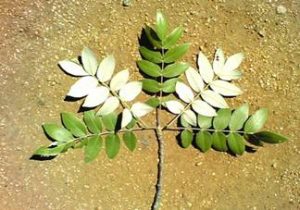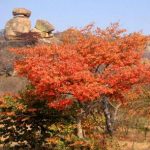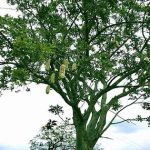TREE LIFE
June 2012
MASHONALAND CALENDAR
Sunday June 17th
A visit to Bill Bedford’s Game Park near Wild Geese Lodge on Alpes Road past Wingate Golf Club.This most interesting venue has been offered by Barbara Kockott. We will meet as usual at 0930, more details and directions will be supplied shortly.
Saturday June 23rd
An afternoon walk in the Botanic Gardens. Tom Muller has kindly agreed to lead, before his annual migration to Europe, so it will be interesting. Meet at the Botanic Gardens car park at 1430.
A DATE FOR YOUR DIARIES
We will be going to Hippo Pools from 13th – 16th September, more details and costs to follow. Keep these dates free so you can join us at this beautiful, interesting venue. – Ed.
CHAIRMAN’S REPORT 2011-12 FOR THE AGM ON SUNDAY 20 MAY 2012
I have pleasure in presenting the Chairman’s report for the year 1 April 2011 to 31 March 2012.
General : This is my eleventh annual report as Chairman.
2011 was the third year in which Zimbabwe operated a multi-currency system (mainly the US$) and in which the quieter, if rather recessionary, environment of sound money, available goods (including fuel) continued.
During the year, it was agreed that various functions of the Society would be more explicitly delegated to Committee members thus freeing up the Chairman from too much routine work and this worked well.
Outings: The normal Tree Society activity of monthly outings continued and we managed to organise eleven out of twelve 3rd Sunday outings, the only missing month being June when there was the outing to La Rochelle. The 4th Saturday walks continued and these were held in 9 out of the 12 months of the period (unfortunately life gets in the way occasionally).
The outings were as shown in the following table:
| Month | Main outing | 4th Saturday |
| April 2011 | Chedgelow Farm | – |
| May | AGM – Mukuvisi | Greystone Park |
| June | (La Rochelle) | Mike Kimberley’s garden |
| July | Stone Bushes, Norton | Monavale vlei |
| August | Ewanrigg | Lamerniere |
| September | Gosho Park | Pure Earth (Wayne Black) |
| October | Bushman’s Point | Mukuvisi Woodland |
| November | Henry Hallam dam | – |
| December | Val D’Or | – |
| January 2012 | Christon Bank (Le Breton) | Gus Spartas’ garden |
| February | Gosho Park | Nat. Botanic Gardens |
| March | Kutsaga | Haka |
In addition to the regular monthly outings, we had a most enjoyable longer trip to La Rochelle in June 2011, efficiently planned and organised by Bill Clarke. A longer trip to Catapu in Mozambique was also being planned and took place in April 2012 and work is underway on a trip to Hippo Pools in September.
Once again, I am very grateful to Meg Coates-Palgrave and David Hartung for stepping in as leaders and for JP Félu for writing up some of the outings. However, more volunteers to organise, lead and write up outings are needed.
Membership: The current membership, compared to previous years, is as follows:
| MEMBERSHIP | 2012 | 2011 | 2010 | 2009 | 2008 | 2007 | 2006 |
| Ordinary
members |
112 | 97 | 105 | 80 | 94 | 114 | 127 |
| Associate
members |
2 | 3 | 7 | 5 | 5 | 5 | 5 |
| Honorary
members |
2 | 3 | 4 | 5 | 6 | 6 | 5 |
| TOTAL | 116 | 103 | 116 | 90 | 105 | 125 | 137 |
During the year, one Associate member asked to be removed from our mailing list and we lost touch with one Honorary member. A reconciliation of the membership between 2011 and 2012 is as follows:
| MEMBERSHIP | Ordinary | Associate | Honorary |
| 2011 | 97 | 3 | 3 |
| New members | +21 | – | – |
| Exits | -6 | -1 | -1 |
| TOTAL | 112 | 2 | 2 |
Good growth in membership took place and the number of ordinary members is recovering nicely.
Tree Mapping: Maureen Silva-Jones has continued to work on this project to map Zimbabwe’s trees on a Quarter Degree Square basis and good progress is being made.
Tree Life: Bill Kinsey continued to produce Tree Life until the end of 2011. Since then, the role has been taken over by Isla Grundy. A long-talked-about innovation was the inclusion of photographs in Tree Life. Despite the much larger file size this has produced few complaints (even from Mango users) and many have welcomed the improvement in Tree Life.
Finance: The financial position of the Society remains strong. The treasurer, Bill Clarke will be reporting on this later in the meeting.
Website: The website has been kept up to date by Odette Lind and our thanks go to her for her hard work. We have plans to purchase our own domain name and make more use of the website.
Committee: During the year, the Committee said farewell to Ruth Evans, Mimi Rowe and JP Felu. The Committee at the time of writing consists of 6 people: Isla Grundy, Bill Clarke, Richard Oulton, Terry Fallon, David Hartung and myself. My sincere thanks go to both current and former members of the Committee for their hard work and support on behalf of the Society.
Herbarium fumigation: A fourth fumigation of the National Herbarium were carried out in 2011. A further appeal has been launched and thanks to that and a generous donation of US$ 700 from the Beit Trust we have sufficient money to assist further. Any further donations would be gratefully received.
Tree of the Month: JP Felu has kindly produced a series of 12 ‘Trees of the month’ which are gradually appearing in Tree Life, illustrated by photographs.
Cultivated Trees: Work has continued slowly on producing a checklist of cultivated trees.
In conclusion …
This has been an active year for the Society; our finances continue to be sound and membership has shown a modest increase.
Mark Hyde Chairman
TREE OF THE MONTH
Lannea discolor;
Family: Anacardiaceae (the mango family); Botanical name: – Lannea discolor; Common names: – Eng: Live Long,; Nd: Isigangatsha, Sh: Chizhenje.
The best known tree in the Anacardiaceae family is the ubiquitous mango tree (Mangifera indica) a tree native of India.

Lannea discolor showing “dis color” leaves
On the indigenous side we have another tree of importance : Sclerocarya birrea, otherwise known as the Marula. Other examples of local Anacadiaceae are the Ozorea and Rhus groups (the latter group has now been renamed Searsia by some office botanist to confuse the issue).
The name “Isigangatsha” means “never die” because the tree will readily strike from cuttings, in turn giving the common English name “Live Long”. The leaves are imparipinnate and the back of the leaflets are covered with a matt of greyish-white hair, giving it specific name “discolor”.
The single trunk is smooth and has a coppery tinge, it often exhibits folds as shown in the
picture. The tree is easily recognised when leafless because of its characteristic bark but also by its barren stubby branches, aptly described by Meg as “ET fingers”.

Lannea discolor flowers
The tree flowers early, around October, long before the leaves appear and the tree is dioecious (the male and female flowers grow on separate trees).
The fruit are edible and refreshing particularly when all else in the bush is dry. As with a lot of indigenous trees the Isigangatsha is used medicinally. The “Traditional Medical Practitioner in Zimbabwe” (M.Gelfand et al. 1985) lists 18 ailments for which it is being used. As its virtues as an aphrodisiac do not seem to be included in the list, I will refrain from comment.

Lannea discolor fruit
The wood is very light, only 530 kg/m3 making it very suitable for fishing net floats. It saws and planes nicely and smaller articles of furniture as well as bowls and spoons can be made from it. The durability of the wood is unfortunately very poor.
-JP Felu
TREE SOCIETY VISIT TO CATAPú, SOFALA, MOZAMBIQUE. Friday, April 6th – Sunday, April 15th, 2012
Episode 2
Saturday April 7th: First impressions
This was my first visit to Catapú. We had arrived too late to see much on Friday but in the morning we were able to explore the area around Mphingue.
Catapú is in Sofala Province in Central Mozambique. The Zambezi River is about 30 kms to the North. It can be reached by continuing along the EN1 to the town of Caia at which there is a magnificent new road bridge across the Zambezi.
Catapú lies on the Mozambique coastal plain (a long way from the sea though) and altitudes were generally very low by Zimbabwe standards. Mphingue itself and the areas of Catapú where we botanised were mostly at just under 100m above sea level.
The vegetation was accurately described by Meg as a mosaic of woodland, forest and thicket and these were the habitats that dominated during our visit. So tightly are these mixed up it was often hard to say which we were in at any given time.
As a general rule, the woodland areas had a decent ground cover of herbs and grass, the latter typically Panicum maximum and Rottboellia conchinchinensis. The vegetation was green and lush, quite unlike much drier Zimbabwe, perhaps reflecting late rains. Both the woodland and forest trees are mainly deciduous. By contrast, the forest areas had little or no ground cover reflecting the lower levels of light.
Thicket areas were seen, e.g. by the Via Pungue, a track leading into the woodland from the sawmill, and appeared to be somewhat like the jesse bush we see in the Zambezi valley in Zimbabwe. Throughout, climbers were frequent and of considerable size.
In addition during the week we also visited two further habitats, namely riverine vegetation adjacent to the sandy bed of the Tissadze River and marshy vegetation at Mfuma Pan. The area is generally flat and as one is surrounded by trees, there are no views to be seen. As one would expect at such a low altitude, temperatures were high for the first few days.
One very surprising thing about Catapú is that there are very few aliens. The only significant invader we saw was Hyptis suaveolens (English names: Pignut or Spikenard), which is a tall labiate with small purple flowers reaching 2-3 metres in height. It is a native of Central America. Its specific name means sweet-smelling; whether one agrees with the term sweet or not, it is certainly highly aromatic and is extremely common along the EN1; one drives though canyons of the stuff on both sides of the road.
Some pictures of it at Catapú, taken by Bart Wursten on an earlier visit, may be seen on the Flora of Mozambique website: https://mozambiqueflora.com/speciesdata/species.php?species_id=149570
This alien has reached Mphingue and we saw it occasionally along roads in the forest. Like many introductions it follows man’s disturbance and I don’t think it is invading the woodland or forests seriously – yet. Ant White is interested to see if an essential oil derived by distilling the leaves can be commercialised and if anyone can help with that he’d be interested to hear from you (please email the Tree Society).
Apart from that weedy species we also saw a small colony of Tridax procumbens at Mphingue and a white-flowered form of Ageratum conyzoides along the Tissadze River. There were absolutely no blackjacks and no Lantana – quite a pleasure and long may it last!
In the afternoon, people started to arrive and it was a jolly party that gathered for our first evening meal.
DO WE NEED TO CHANGE ANYTHING? (for those who weren’t at the AGM)
The committee has noticed that attendance at some of the outings over the past year has been quite poor, and we are wondering if there is anything we need to change. Are we providing enough of interest on the outings? Is it exciting enough? Do we need more variety? Please send your ideas and suggestions to our email address, or contact any of the committee members (see below).



